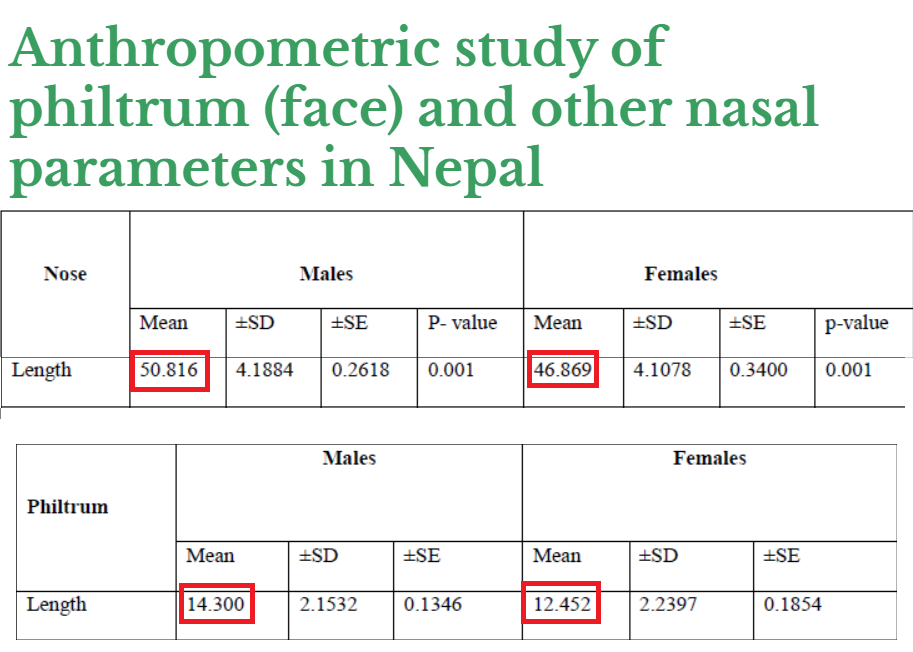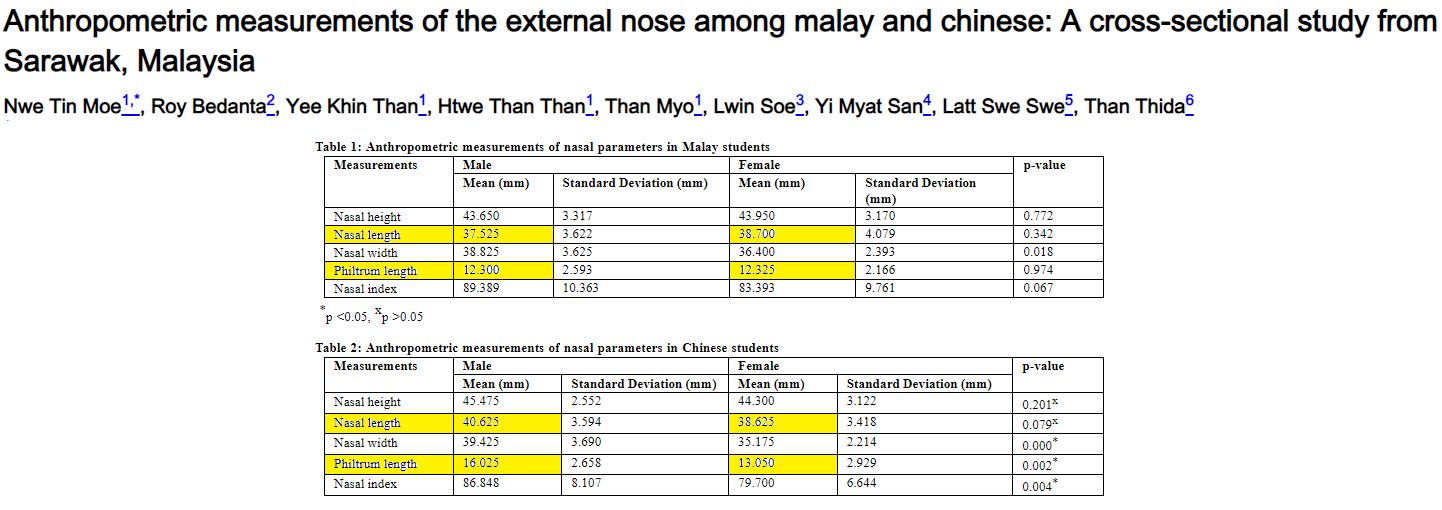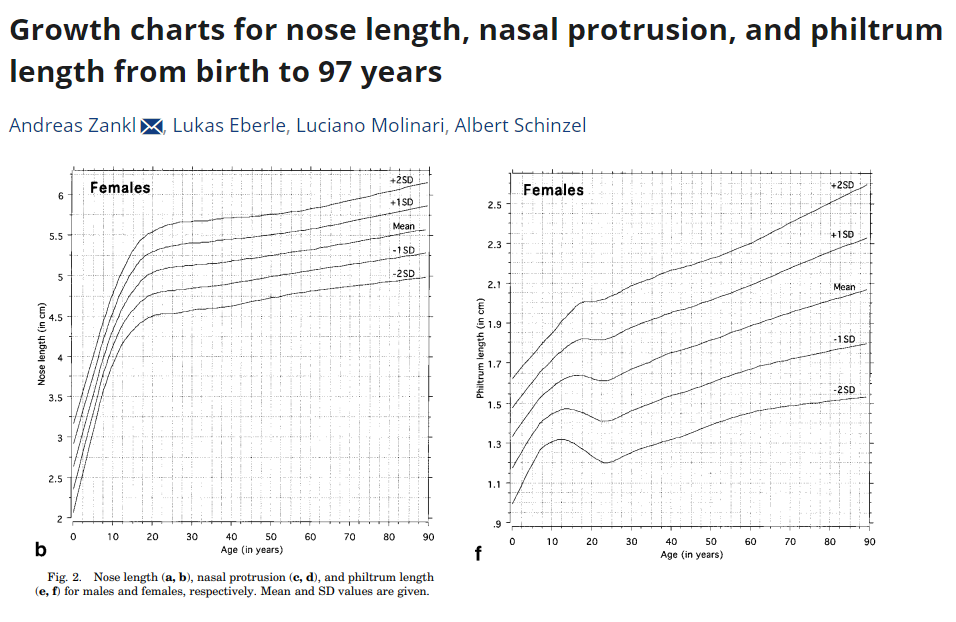Summary
Nose Length to Philtrum length ratio is larger among females. Yadav et al. (2018) found that females in Nepal have a slightly larger Nose-Length to Philtrum-Length ratio (3.76) compared to males (3.55). Similarly, Nwe et al. (2024) found that among Malay and Chinese university students in Sarawak, females had slightly larger ratios than males, with 3.14 versus 3.05 for Malay participants and 2.96 versus 2.54 for Chinese participants. These findings suggest a relatively longer nose in females, which could be considered more feminine. Zankl et al. (2002) further supports this finding, showing that females, particularly in middle age groups, exhibit a higher ratio, contributing to a more elongated nose relative to the philtrum.
Research
A research study was carried out by Yadav et al. (2018) titled “Anthropometric Study of Philtrum (Face) and other nasal parameters in Nepal” showing the ratio of Nose-Length to Philtrum-Length is slightly larger in females (3.76) compared to males (3.55). The study suggested that a larger ratio of Nose-Length to Philtrum-Length is a more feminine feature, as the study reveals that females have a proportionally longer nose relative to their philtrum.

Similarly, another study Nwe et al. (2024) investigated the measurements of nose and philtrum among Malay and Chinese university students in Sarawak. A total of 80 university students (40 males and 40 females) aged between 18 and 25 participated. As per this study, for Malay, the Nose Length to Philtrum Length ratio is slightly larger for females (3.14) compared to males (3.05). Likewise, among Chinese students, the Nose Length to Philtrum Length ratio is larger for females (2.96) compared to males (2.54). This indicates that females have a relatively longer nose length compared to their philtrum length when compared to males, which might be interpreted as a more feminine characteristic.

Another study by Zankl et al. (2002) provided the values for nose length and philtrum length for various age groups. The ratios were determined by dividing the nose length by the philtrum length for each age group, giving an indication of the proportional relationship between these two features. These ratios suggest that females tend to have a slightly higher ratio, especially in middle age groups, contributing to a more elongated appearance of the nose relative to the philtrum.

References
Yadav, S. K., Malla, B. K., Srivastava, A. K., Timsina, R. P., Srivastava, N., & Kumar, A. (2018). Anthropometric Study of Philtrum (Face) and other nasal parameters in Nepal. International Journal of Modern Anthropology, 2(11), 163-180. 10.4314/ijma.v2i11.8
Nwe, T. M., Roy, B., Yee, K. T., Htwe, T. T., Than, M., Lwin, S., … & Than, T. (2024). Anthropometric measurements of the external nose among Malay and Chinese: A Cross-sectional study from Sarawak, Malaysia. Research Journal of Pharmacy and Technology, 17(3), 1256-1261. http://dx.doi.org/10.52711/0974-360X.2024.00196
Zankl, A., Eberle, L., Molinari, L., & Schinzel, A. (2002). Growth charts for nose length, nasal protrusion, and philtrum length from birth to 97 years. American journal of medical genetics, 111(4), 388-391. https://doi.org/10.1002/ajmg.10472